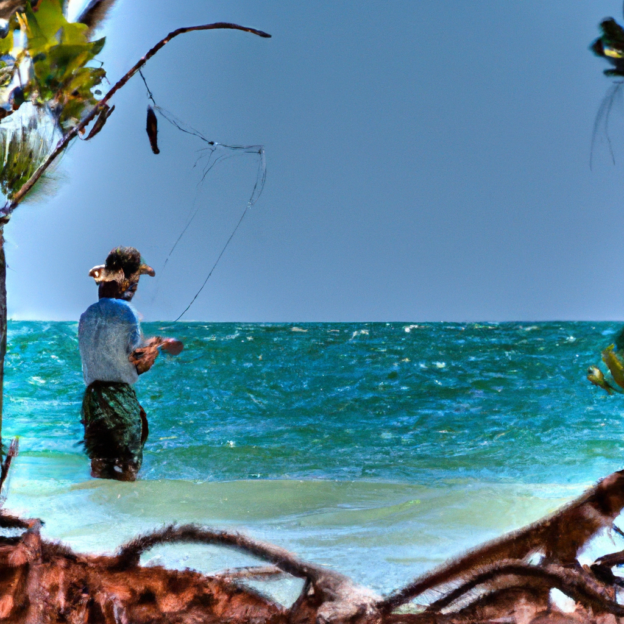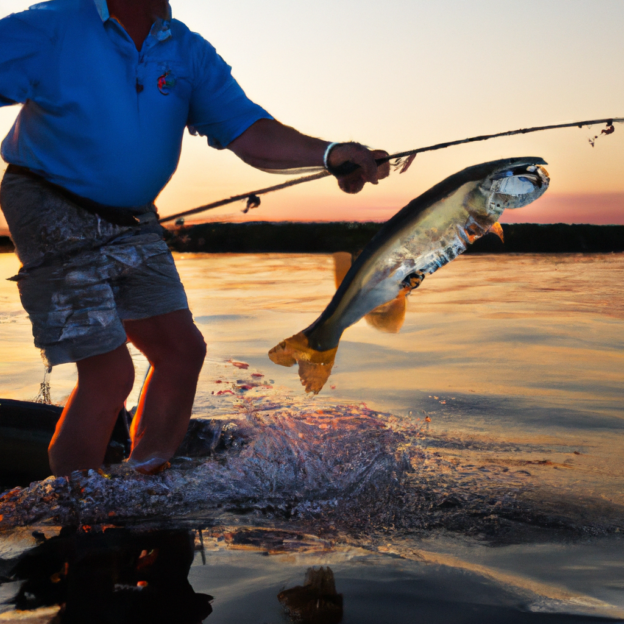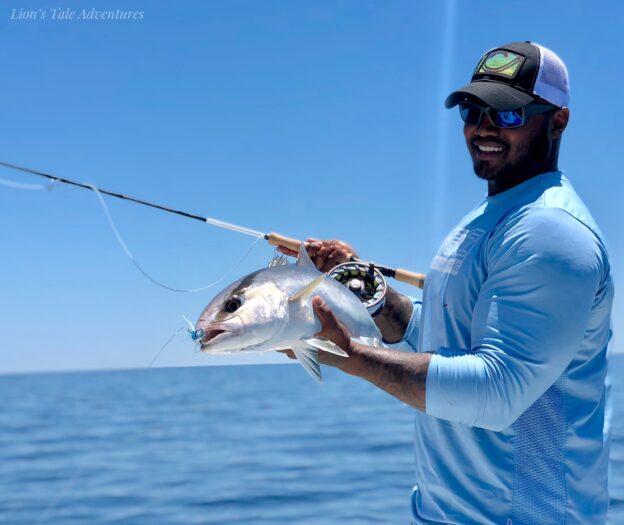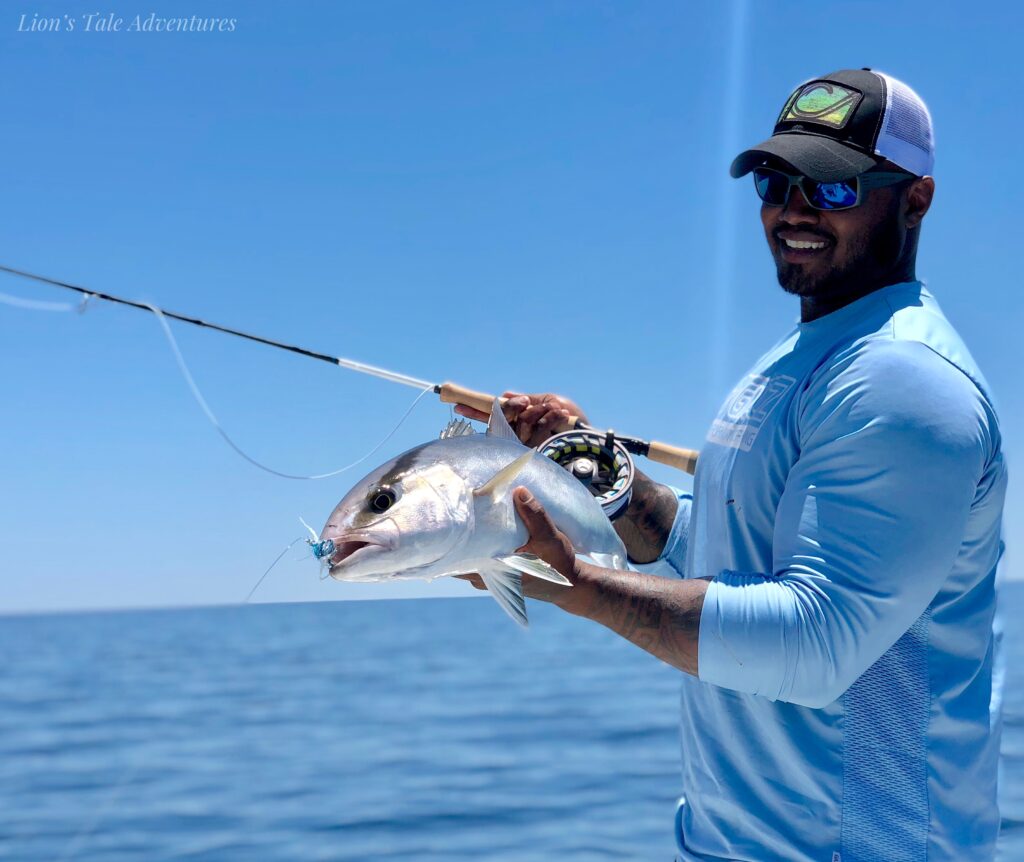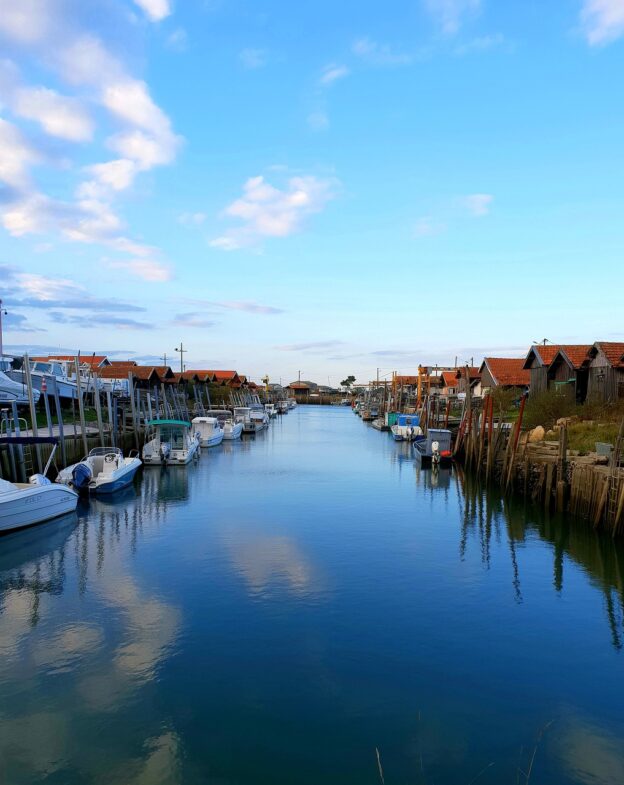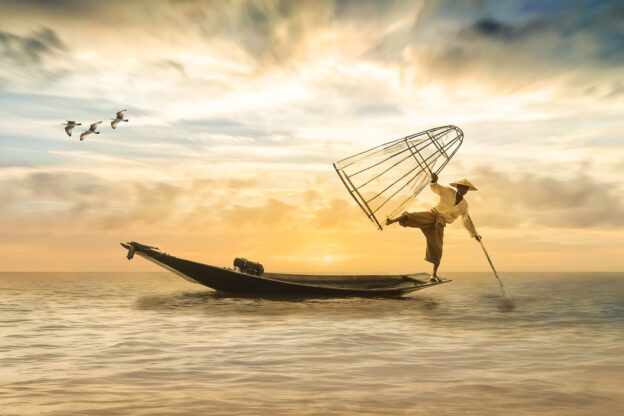If you’re an avid angler looking to embark on a truly unforgettable fishing experience, then you need to read this article. We’re about to introduce you to the hidden gem of Florida Everglades fly fishing guides. Imagine immersing yourself in the breathtaking beauty of the majestic Everglades, casting your line in pristine waters, and reeling in some of the most prized game fish. With the help of expert guides who know the ins and outs of these mysterious wetlands, you’re in for a thrilling adventure that will leave you with countless tales to share. So, let’s discover the world of Florida Everglades fly fishing together and unleash your inner angling enthusiast!

Choosing the Right Florida Everglades Fly Fishing Guide
When it comes to planning a fly fishing trip to the Florida Everglades, choosing the right guide is crucial to your success and overall experience. With so many options available, it’s important to consider several factors before making your decision.
Experience and Expertise
One of the first things you should consider when choosing a fly fishing guide is their level of experience and expertise. Look for guides who have spent a significant amount of time fishing in the Everglades and have a deep understanding of the area. Experienced guides will not only know the best fishing spots, but they will also have valuable knowledge about the Everglades ecosystem and the behavior of the fish species you’ll be targeting.
Client Reviews and Recommendations
Reading client reviews and seeking recommendations from fellow anglers is another helpful way to narrow down your choices. Look for guides who consistently receive positive feedback and have a strong reputation within the fly fishing community. Taking the time to read about other anglers’ experiences can provide valuable insights into the quality of service, professionalism, and expertise of different guides.
Fishing Techniques and Specializations
Consider what type of fishing techniques and specializations you’re interested in. Some guides may focus on specific types of fly fishing, such as saltwater flats or backcountry bass. If you have a particular target species in mind or if you want to try a specific technique, make sure to find a guide who specializes in that area. This will ensure that you receive the most tailored and specialized experience possible.
Cost and Package Inclusions
It’s important to consider your budget when choosing a fly fishing guide, but remember that the cheapest option may not always be the best. Look for guides who offer competitive pricing while also providing a comprehensive package that includes necessary equipment, gear, and transportation. Compare what each guide offers in their packages and determine which one aligns with your needs and preferences.
What to Expect from a Florida Everglades Fly Fishing Guide
Now that you’ve chosen a Florida Everglades fly fishing guide, you may be wondering what to expect during your trip. Here are some key aspects you can anticipate:
Knowledge of the Everglades Ecosystem
A good guide will have extensive knowledge of the Everglades ecosystem and its unique characteristics. They will be able to provide you with insights into the flora and fauna of the area, adding depth and richness to your fishing experience. From discussing the delicate balance of the ecosystem to pointing out interesting wildlife sightings, your guide will help you develop a deeper appreciation for the Everglades.
Understanding the Fish Species
Your fly fishing guide will have a thorough understanding of the fish species that inhabit the Everglades. They will be able to identify different species, explain their behavior patterns, and provide tips on how to successfully target them. With their expertise, you’ll have a higher chance of hooking the fish you’re after and learning more about their unique characteristics.
Local Fishing Hotspots
One of the main reasons for hiring a guide is to gain access to the best fishing spots in the Everglades. Your guide will take you to their preferred locations, which are often well-known for their abundance of fish and scenic beauty. They will know the currents, tides, and other factors that influence fish behavior, maximizing your chances of success.
Equipment and Gear Provision
Most fly fishing guides in the Everglades provide all necessary equipment and gear, ensuring that you have everything you need for a successful fishing trip. From rods and reels to flies and leaders, your guide will have you covered. This not only saves you the hassle of bringing your own gear but also allows you to try out high-quality equipment that is specifically suited for the Everglades’ fishing conditions.
Instruction and Skill Development
Whether you’re new to fly fishing or an experienced angler, your guide will provide instruction and help you develop your skills. They can teach you new techniques, offer casting tips, and guide you on how to read the water. A good guide will cater to your needs and skill level, ensuring that you have the best chances of catching fish and improving your fly fishing abilities.

Preparation for a Florida Everglades Fly Fishing Trip
Before embarking on your Florida Everglades fly fishing trip, it’s important to make the necessary preparations to ensure a smooth and enjoyable experience. Here are some key steps to take:
Research and Planning
Take the time to research different fly fishing guides and their offerings. Read reviews, browse websites, and compare prices and packages. Careful planning and research will help you choose the right guide and make the most of your trip.
Obtaining Fishing Licenses
Make sure to obtain the necessary fishing licenses before your trip. In Florida, both residents and non-residents need a valid fishing license unless they are fishing from a licensed charter boat.
Packing the Essentials
Packing the right gear and essentials is crucial for a successful fly fishing trip. In addition to personal items such as clothing, sunscreen, and insect repellent, make sure to bring your fishing gear, including waders, boots, and a hat. Check with your guide to confirm specific gear requirements and recommendations.
Booking Accommodation and Transportation
Consider your accommodation needs and book a place to stay that suits your preferences. Some guides may offer fishing packages that include accommodation, while others may provide recommendations for nearby accommodations. Additionally, make sure to arrange for transportation to and from the fishing location, whether it’s a rental car or a shuttle service.
Physical Fitness and Stamina
Keep in mind that fly fishing in the Everglades can require physical endurance and stamina. Be prepared for long days on the water, hiking through marshes, and wading in potentially challenging conditions. Engaging in regular exercise and building up your fitness levels prior to your trip will enhance your enjoyment and overall experience.
Tips for Successful Fly Fishing in the Florida Everglades
While your guide will provide valuable advice and guidance, here are some additional tips to help you make the most of your fly fishing experience in the Florida Everglades:
Timing and Seasonality
Timing is crucial when it comes to fly fishing in the Everglades. Different seasons and weather patterns can greatly affect fish behavior and feeding habits. Research the best times of the year to target your desired species and plan your trip accordingly.
Weather Conditions and Tides
Pay attention to weather conditions and how they can impact fishing. Factors such as wind direction, cloud cover, and water temperature can all influence fish activity. Additionally, understanding tidal patterns is essential as it affects water levels and movement, which in turn affects where fish are likely to be found.
Fly Selection and Presentation
Choose flies that mimic the local baitfish and insects that fish in the Everglades feed on. Experiment with different patterns and sizes to see what works best. When presenting your fly, focus on making accurate casts and natural presentations to entice fish to strike.
Approaching Fish and Stealthy Techniques
Fish in the Everglades can be easily spooked, so it’s important to approach them with stealth and caution. Move slowly and quietly, avoiding sudden movements that may startle the fish. Practice your casting and handling skills to minimize disturbances and increase your chances of hooking a fish.
Conservation and Ethical Fishing Practices
Adhere to the principles of catch and release, ensuring the long-term sustainability of the fish populations in the Everglades. Handle fish gently and minimize their time out of the water to decrease stress. Additionally, follow any specific guidelines provided by your guide regarding targeted species and size limits.
Safety and Regulations for Florida Everglades Fly Fishing
While fly fishing in the Florida Everglades is a thrilling adventure, it’s important to prioritize safety and adherence to regulations. Here are some considerations to keep in mind:
Boating Safety and Navigation
If your fly fishing trip involves boating, follow proper boating safety practices. Wear a personal flotation device (PFD) at all times and familiarize yourself with local waterways and navigation aids. Be cautious of potential hazards such as submerged objects and shallow waters.
Understanding Catch and Release Guidelines
Make sure to understand and follow catch and release guidelines specific to the Everglades. Some species may have size restrictions or seasonal closures, and certain sensitive areas may have additional regulations to protect the environment and fish populations.
Awareness of Wildlife and Possible Hazards
The Everglades is home to various wildlife, including alligators, snakes, and other potentially dangerous creatures. Be aware of your surroundings and maintain a safe distance from wildlife. It’s also important to be cautious of biting insects, such as mosquitoes and ticks, and protect yourself accordingly.
Compliance with Florida Fishing Regulations
Florida has specific fishing regulations that apply to different areas, species, and seasons. Familiarize yourself with these regulations and ensure your actions are compliant. Your guide will also be knowledgeable about these regulations and should provide information and guidance.
Emergency Preparedness
While rare, emergencies can happen, and it’s important to be prepared. Carry a basic first aid kit, have a plan in case of unexpected weather changes, and inform someone of your itinerary and expected return time. Check weather forecasts and any potential hazards before heading out on the water.
What Makes the Florida Everglades a Fly Fishing Paradise
The Florida Everglades is renowned for its unique ecosystem and abundant fly fishing opportunities. Here’s what makes it a true paradise for fly anglers:
Biodiversity and Pristine Ecosystem
The Everglades is an unparalleled ecosystem, home to a vast array of plants, animals, and fish species. From largemouth bass and snook to tarpon and bonefish, the Everglades supports an incredibly diverse range of fish. Its untouched natural beauty and abundant wildlife make it a paradise for both fishing and nature enthusiasts.
Challenges and Rewards of Fishing in the Everglades
Fly fishing in the Everglades presents its own set of challenges that can be both rewarding and exciting. Navigating through mangroves, casting accurately in tight spaces, and sight fishing to wary fish are just a few examples of the unique challenges anglers may encounter. Overcoming these challenges and successfully landing a fish in this pristine environment make for an incredibly memorable and fulfilling experience.
Unique Fishing Opportunities
The Everglades offers a wide range of fishing opportunities for anglers of all skill levels. Whether you prefer wade fishing in shallow flats, exploring backcountry creeks, or casting from a skiff in open water, the Everglades has it all. With its diverse habitats and fish species, there’s always something new to explore and target.
Photography and Wildlife Sightings
Fly fishing in the Everglades not only presents an opportunity to catch fish but also to witness and photograph stunning wildlife. From majestic birds to captivating reptiles, the Everglades is a haven for wildlife enthusiasts. The breathtaking scenery and unique photo opportunities make it a dream destination for photographers as well.
Exploring the Wilderness
The Everglades is a vast wilderness waiting to be explored. Beyond the fishing, there are countless opportunities for hiking, birdwatching, kayaking, and immersing yourself in the natural beauty of this incredible landscape. Whether you’re an avid adventurer or simply enjoy being surrounded by nature, the Everglades has something to offer everyone.
FAQs about Florida Everglades Fly Fishing Guides
Here are some frequently asked questions to provide further information about fly fishing in the Florida Everglades and the role of guides:
Q: What is the best time of year to fly fish in the Everglades?
A: The best time to fly fish in the Everglades depends on your target species. Generally, the winter months, from November to March, offer excellent fishing for species like snook, redfish, and sea trout. Tarpon, on the other hand, are best targeted during the spring and summer months, from April to September.
Q: Do I need a fishing license for the Everglades?
A: Yes, a fishing license is required to fish in the Everglades. Both residents and non-residents must have a valid fishing license unless they are fishing from a licensed charter boat. Licenses can be obtained online or at various sporting goods stores and bait shops.
Q: Can I bring my own fly fishing gear?
A: While some guides may allow you to bring your own gear, many provide all necessary equipment and gear. It’s best to check with your guide beforehand to confirm their policies and recommendations. Using the guide’s equipment ensures that you have gear specifically tailored for the Everglades’ fishing conditions.
Q: Are alligator encounters common in the Everglades?
A: Alligator encounters are relatively common in the Everglades, as they are a native species and play a significant role in the ecosystem. However, guided fly fishing trips are typically conducted in areas where alligator encounters are minimal or non-existent. Your guide will prioritize your safety and take precautions to avoid potential encounters.
Q: What type of fish can be caught in the Everglades?
A: The Everglades is home to a variety of fish species that can be targeted on a fly. Some of the popular species include snook, redfish, sea trout, tarpon, largemouth bass, and panfish. The specific species available will depend on the time of year and the location within the Everglades.
Conclusion
Choosing the right Florida Everglades fly fishing guide is essential for a successful and enjoyable trip. Consider factors such as experience, client reviews, fishing techniques, and cost when making your decision. Once you’ve selected a guide, you can look forward to an adventure-filled trip with a knowledgeable guide who will enhance your experience of the Everglades’ ecosystem and help you catch the fish of a lifetime. With proper preparation, adherence to safety and fishing regulations, and a positive mindset, you can create memories that will last a lifetime in the stunning wilderness of the Florida Everglades. Happy fishing!

